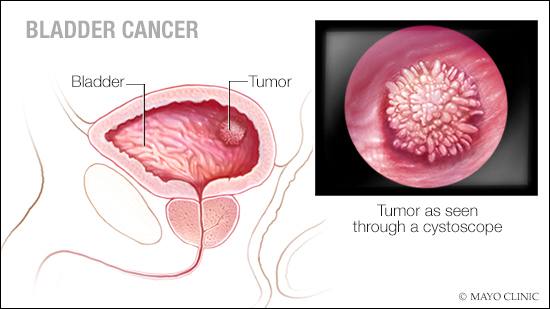-
Living With Cancer: Understanding bladder cancer
 Bladder cancer
Bladder cancer
Bladder cancer is one of the most common cancers, affecting approximately 68,000 adults in the U.S. each year. Bladder cancer occurs more frequently in men and usually affects older adults. May is Bladder Cancer Awareness Month, which makes it a good time to learn more about the symptoms, causes, risk factors and treatment options for bladder cancer. Here's what you need to know.
Active surveillance for prostate cancer
Active surveillance for prostate cancer, also called expectant management or watchful waiting, is used to avoid treatment side effects in men with a low risk of prostate cancer progression. Active surveillance means there is no treatment. Rather, the cancer is simply monitored for any changes. This approach may be recommended when the cancer is small, expected to grow slowly, confined to one area of the prostate, and not causing signs or symptoms. Find out more about active surveillance for prostate cancer and whether it might be right for you.
Lung cancer: Diagnosis and treatment
Lung cancer, the leading cause of cancer deaths in the U.S., claims more lives each year than colon, prostate, ovarian and breast cancers combined. Treatment options include surgery, chemotherapy, radiation therapy and immunotherapy. The recommended treatment plan may depend on a number of factors, including your overall health, type and stage of cancer, and preferences. Learn more about these treatment options, how lung cancer is diagnosed, and the importance of annual lung cancer screening for people with an increased risk of developing the disease.







